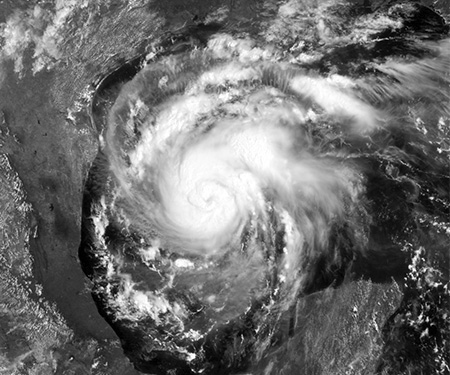As people in areas affected by Hurricane Harvey begin to return to their flooded homes, many will face mold problems. The chemicals used to kill the mold can, for some people, present as big a health challenge as the mold itself.
Environmental medicine researcher Claudia Miller, M.D., M.S., of the Long School of Medicine at UT Health San Antonio, says physicians in affected states need to know what to do for patients in the storm’s aftermath. Over the coming months, millions will be facing mold exposure, and it’s important for health care providers to know the signs and symptoms.
Mold exposure is associated with three types of health problems, Dr. Miller said. These are allergy, toxicity and toxicant-induced loss of tolerance (TILT).
“These are challenges for any doctor — mold health effects are not something most doctors learn about in their medical training,” Dr. Miller says. “They need be able to access our website, TILTResearch.org, and mold information on the U.S. Environmental Protection Agency and National Institutes of Health websites, as well as the Quick Environmental Exposure and Sensitivity Inventory (QEESI), which is free at TILTResearch.org.
“Of course there are many immediate hazards like infections, snake bites, fire ants and alligators, puncture wounds and cuts,” Dr. Miller says. “These are most important and doctors are skilled at diagnosing them. But there are also petrochemicals contaminating the water around oil refineries, pesticides, agricultural runoff, and cleaning chemicals that will be applied, often with insufficient personal protection in enclosed hot, moldy, unventilated spaces.
“Ill effects of these chemicals and mold can occur simultaneously or subsequent to exposure. TILT occurs in more-susceptible persons whom doctors can identify using the QEESI instrument,” she continued. “TILT can arise within days or weeks of a pesticide or other petrochemical exposure. Molds themselves emit volatile organic chemicals (mold VOCs) and can be toxic and allergenic. Doctors need this information.”
TILT symptoms are typically multi-system, involving brain, skin, lungs and other organs, and often include cognitive and mood difficulties. Treatment requires exposure avoidance.
Dr. Miller is available for phone interviews now through Wednesday, Sept. 6. On-camera interviews are available on Tuesday and Wednesday, Sept. 5 and 6. To schedule an interview, please call Will Sansom, UT Health San Antonio, at 210-567-2579, or write to sansom@uthscsa.edu.
Dr. Miller is professor emeritus in the Joe R. & Teresa Lozano Long School of Medicine at The University of Texas Health Science Center at San Antonio, now called UT Health San Antonio. She is also a visiting senior scientist at the Harvard T. H. Chan School of Public Health and an environmental scientific consultant to the Marilyn B. Hoffman Foundation.
Read a 2014 UT Health press release about QEESI.
The University of Texas Health Science Center at San Antonio, with missions of teaching, research and healing, is one of the country’s leading health sciences universities and is now called UT Health San Antonio™. UT Health’s schools of medicine, nursing, dentistry, health professions and graduate biomedical sciences have produced more than 33,000 alumni who are advancing their fields throughout the world. With seven campuses in San Antonio and Laredo, UT Health has a FY 2018 revenue operating budget of $838.4 million and is the primary driver of its community’s $37 billion biomedical and health care industry. For more information on the many ways “We make lives better®,” visit www.uthscsa.edu.


